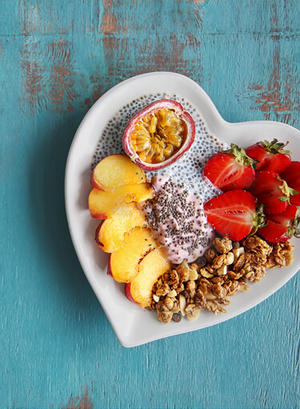- My Ramadan
- Recipes
- Nutrition And Health
-
Brands
- Aero
- COFFEE-MATE®
- CRUNCH® CEREALS
- Cocoa Puffs®
- Fitness Toasties
- illuma 3
- KLIM®
- MAGGI®
- NAN® 3
- NESCAFÉ®
- NESQUIK®
- Nestle® CERELAC®
- Nestle® Pure Life®
- NIDO® PLUS
- PROGRESS KIDS GOLD
- SMARTIES®
- COUNTRY CORN FLAKES®
- CHOCAPIC®
- COOKIE CRISP®
- HONEY CHEERIOS®
- KITKAT®
- LION® CEREAL
- NESCAFÉ® Dolce Gusto®
- NESQUIK® CEREALS
- Nestle® FITNESS®
- NESTLÉ® DESSERT SOLUTIONS
- NIDO® FORTIFIED
- PROMISE PE GOLD
- Perrier®
The best way to store food in your kitchen
It’s essential to the running of every home, the source of delicious aromas, and the place where you spend most of your time every day. We’re talking about your kitchen!
Whether you’re deciding the day’s menu, cooking or storing your food, a considerable amount of your time is spent there, especially when you have a big family. This is why it is important to pay the utmost attention to keeping your kitchen tidy, your food safe and at its best quality.
So in order to help you do that, we’re providing you with tips on how to organize and store food in your kitchen:
General DO’s
- Store non-perishable items inside your cupboards. These are items that don’t spoil easily, such as canned foods, cereals, dry foods (soups, powdered milk), pasta in cartons (not fresh), foods packaged and sealed in glass jars (tomato sauce, pickles, vinegar), cake mixes, salt, sugar, flour, UHT milk, unopened sweetened condensed milk, spices and syrup.
- Food items in dry storage should be kept in airtight containers or glass jars to prevent insect infestation, such as rice, beans, flour, etc. Always store your dry foods in a dark place and moderately cool place. This also applies to canned foods.
- Foods like milk, eggs, cheese, yoghurt, meats, and vegetables should be refrigerated immediately because they are perishable and prone to spoilage. Frozen foods such as meat, fish, chicken, ice cream, and frozen vegetables must be put in the freezer right away. You should also make sure to store raw and cooked foods separately in the refrigerator.
Specific DO’s
- Flour: Store it in an airtight container on your kitchen shelf or cupboard. In hot and humid weather, it is recommended to buy flour in small amounts and keep it refrigerated. For whole-wheat flour, it should be kept in the refrigerator all year round in order to avoid off-flavours.
- Sugar: Should be stored at room temperature. To keep it dry, put it in a well-sealed plastic bag or in a jar with a tight lid.
- Bread: To keep bread fresh, store it at room temperature in a cool, dry place. However, if it is hot and humid, then store bread in the fridge to delay the growth of molds.
- Vegetables: You can store most of the vegetables in the drawer of your fridge with the exception of:
- Dry onions, potatoes and garlic which should be stored in a cool dark place. Buy them in small amounts because they may sprout in your kitchen.
- Tomatoes, bananas, avocados and cantaloupe can be stored at room temperature. Refrigerate when the desired ripeness is achieved.
- Apples can be stored in a cool place, but if the weather is hot and humid, it’s best to refrigerate.
DON’Ts
- Store foods under the kitchen sink
- Store foods alongside household chemicals
- Put food products on the floor
- Store dry foods near the oven as they get spoiled when exposed to heat
- Purchase packages with rips or tears
Following these tips to sort out your kitchen space will help you maintain the freshness of your foods, its flavor and most importantly its safety. But it may not help you solve your next dilemma: what’s the menu for your next meal?




